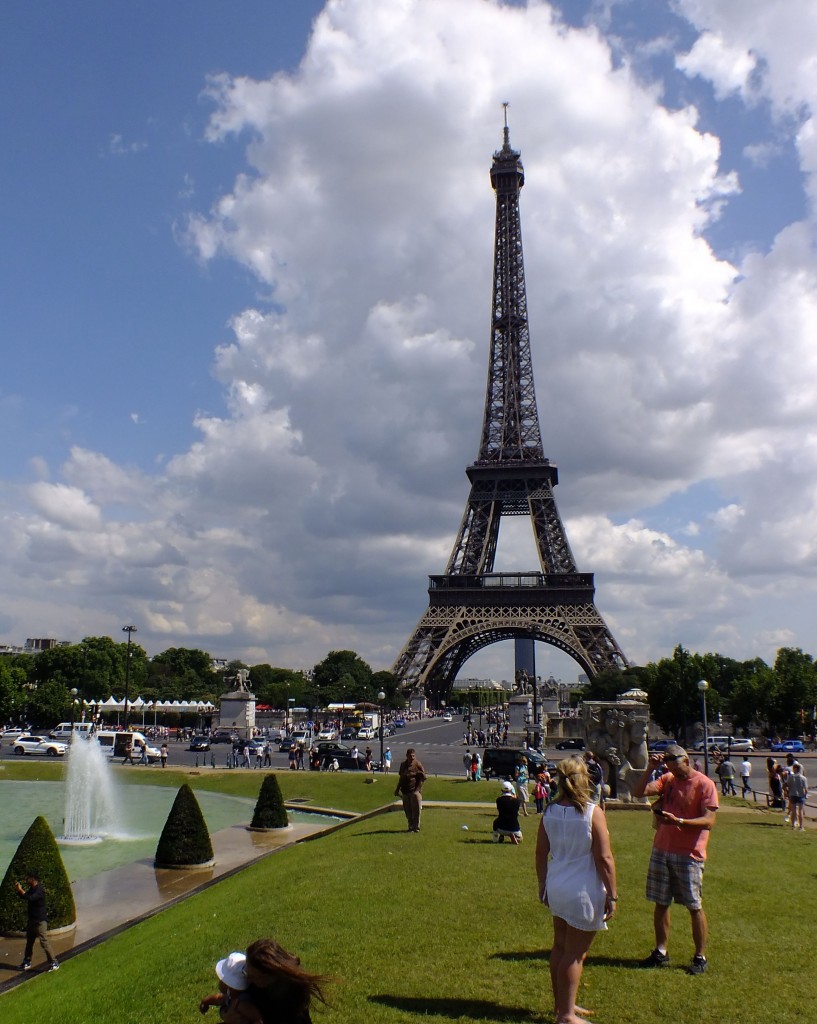
The Eiffel Tower is a must do in Paris, but there are plenty of other places that are worth visiting.
With summer upon us in Europe, there is no better time to visit Paris and soak up some of the Paris charm. Most people have a bucket list of what they want to see which includes the Eiffel Tower, Notre Dame and the Louvre. While these locations are fantastic, they often involve big queues and let’s face it, when visiting a new city why see what everyone has seen, try getting off the beaten track a little and visiting something different. Peter Campbell describes some of his favourite locations to experience l’esprit de Paris.
Le château de Vincennes
Located in the east of Paris, Le château de Vincennes is an easy metro ride from the central city (on line 1 of metro system). The chateau is an impressive 14th century castle with trenches, outer bastions, a lovely gothic church and a real mediaeval keep. The chateau began life under Louis VII who built a hunting lodge on the site in about 1150. During the 100 Years War (1337-1453) between the English and French this hunting lodge turned into a fortified citadel, becoming the tallest defensive structure in Europe with the towers of the keep (donjon) 52 metres high. While the chateau was never besieged it has played a central role in France’s long history. It served as the residence for the French royal family. It was here that King Henry V of England died in 1422 after contracting an illness (possibly dysentery) during the siege of Meaux. After the assassination of Henry IV in 1610, his wife Marie de Médicis fled to Vincennes where she raised Louis XIII –the father of the Louis XIV famous for his ongoing wars and for building Versailles.
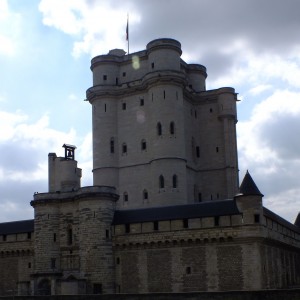
The keep (or donjon) at Chateau de Vincennes is your classic mediaeval castle.
Over time, the donjon of the chateau began to be used more frequently as a prison. In Alexandre Dumas’ sequel to The Three Musketeers, entitled 20 Years After, the chateau features extensively as a prison, along with the Bastille where important political prisoners were held. After the French Revolution, the donjon was used extensively as a prison and still has graffiti etched into the stone walls from this period. Among its more famous prisoners was the Marquis de Sade who held twice at Vincennes. The first time for disorderly behaviour in a brothel, the secondly, for purportedly poisoning a prostitute. He spent seven years at the chateau before being sent to the Bastille. He was released in 1790. In 1801, Napoleon ordered his arrest for writing Justine (the first draft was written in Vincennes) and Juliette, which included pornographic writings and philosophical justifications for them (he’d be right at home in the 21st century and would doubtless be proud of society’s growth).
The château de Vincennes is a great visit to get in touch with your mediaeval fantasies. As the home of the French royal family it has been an important stage for many of the most dramatic events of French history – without the crowds you will find at Verseilles.
Le Bourget – Aviation museum
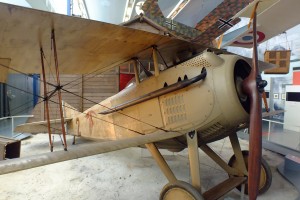
A plane dating to WWI at Le Bourget Aviation Museum.
To the north east of Paris on the RER B line is Europe’s largest private airfield and is worth visiting even if you don’t own a private jet. Le Bourget was the airport that American pilot Charles Lindbergh arrived at when he flew non-stop across the Atlantic from New York’s Long Island to Europe on the Spirit of St. Lewis, arriving at the airfield on 21 May 1927. Le Bourget is also home to an extensive aviation museum with full size planes from every period of aviation history – including some models of abortive 19th century gliders and planes. The museum traces the history of flight through to the space age with real satellites on display and information on the development of flight – including a section discussing Franco-Soviet space collaboration in the 1970s. Furthermore, every June Le Bourget is home to the Paris Air show where aviation companies show off their latest products and the industry encourages people to take up a career in aviation. Le Bourget is a great trip for anyone who has ever been interested in these remarkable flying machines.
For more information on Le Bourget.
Hôtel des Invalides – Military Museum and Napoleon’s tomb
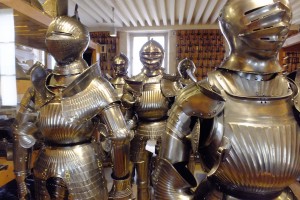
The Army Museum at Le Hotel des Invalides has one of the largest displays of arms and armour in the world
While military history isn’t for everyone, the museum complex at Hôtel des Invalides (metro station Les Invalides on line 1) is so extensive it is worth seeing. The building was originally constructed in the 1670s by Louis XIV for veterans of his numerous wars and is now dedicated to France’s entire military history. The museum includes artefacts from bronze age France, suits of plate armour from the 15th to 17th centuries and weapons from nearly every period. More recent history is represented by colourful military uniforms and recent weaponry – service swords, small swords, pistols and muskets. One wing of the building is dedicated to World War II and there is a separate section on Charles de Gaulle – Free France’s wartime leader, and a source of stability for France in the tumultuous post-war and decolonisation period.
Behind Hôtel des Invalides is a beautiful domed church, Eglise du Dôme which houses the tomb of Napoleon Bonaparte. Beneath the central dome is Napoleon’s huge and rather tasteless coffin. The frescoes surrounding the coffin celebrate the conqueror’s civil achievements. Although, Napoleon is largely known to the English speaking world for his megalomaniac desire for conquest – being one of the few people to have conquered most of Europe as well as invading Egypt, he was a man of huge energy whose administrative and legal reforms touched every aspect of French life, and are largely still in effect today.
Parc des Buttes-Chaumont
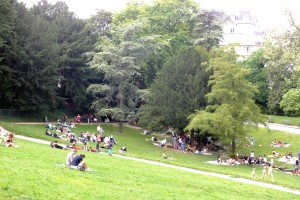
Parc de Buttes-Chaumont is a lovely location to relax from the bustle of city life, and is close to nice restaurants and cafes.
If you are foot sore and weary from traipsing about Paris under a midday sun or walking through miles of museums. A relaxing afternoon at the Parc des Buttes-Chaumont (metro station Buttes-Chaumont on line 7bis) might be in order. While most tourists like to take an afternoon off at the Champ de Mars by the Eiffel Tower, the Parc des Buttes-Chaumont has several advantages: it is not crowded by tourists and the various hecklers constantly trying to sell tacky souvenirs, and the park itself is attractively landscaped which offers more variety and is simply more pleasant than Champ de Mars. It also feels more genuinely French. The park itself has a large artificial hill which you can climb to see views of Paris, a river which dogs like to chase ducks in, and a cool grotto with waterfall to escape the sun if it’s burning hot. The park was landscaped during the reign of Napoleon III (nephew of Napoleon Bonaparte and known for his luxurious tastes) and opened in 1867. It is near to some excellent restaurants and cafes located by Place de la Bataille-de-Stalingrad.
Château de Fontainebleau
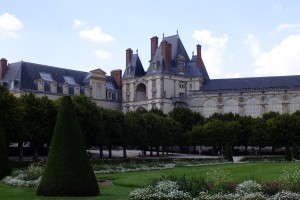
Le Chateau de Fontainebleau is a short trip out of Paris and has many of the attractions of Versailles without the tourists. It is also a great place for outdoors activities.
Fontainebleau is an attractive, quite town about an hour from Paris by train. While not as famous as Versailles, Fontainebleau was a favourite location for the kings of France, today it is popular for horse-riding, rock climbing, walks, and the château itself – which was also a favourite with Napoleon Bonaparte. The château comprises 1900 rooms and is particularly famous for its Chinese Museum and the Francois I Gallery. However, walking through the gardens and parks is as much a pleasure as the buildings and if you feel you have spent too much time in the city – then Fontainebleau is a lovely day trip – especially if you have company.
The château started out as a hunting lodge in the 12th century under Louis VII and although added to by subsequent kings, it was transformed in the 15th century by François I, creating the basic structure of what you see today. While Versailles is famous for the treaty that concluded World War I, Fontainebleau is associated with a list of treaties and important political decisions. In 1685, Louis XIV signed the Edict of Fontainebleau which revoked the rights of Huguenots (a protestant faction whose conflict with the Catholic majority in France led to ongoing problems throughout the 16th and 17th centuries). In 1762, the Treaty of Fontainebleau between France and Spain led to France ceding Louisiana in North America to Spain, which caused further conflict on the North American continent. Furthermore, the initial discussions for the peace treaty that ended the Seven Years War (1756-1763) were held at Fontainebleau. It was here too that Napoleon authorized French troops to travel through Spain to invade Portugal, and where he abdicated power for exile on Elbe in 1814, and where he said farewell to his Old Guard that had served him since his first campaigns.
Basilique de Saint-Denis
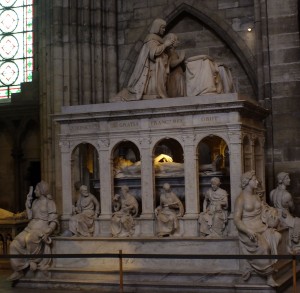
The tomb of Louis XII of France. St. Denis was the location for the coronation and burial of the French monarchy.
France is full of impressive and attractive churches and quickly one becomes very much like another. If you want to place yourself at the centre of French history then visiting the Basilique de Saint-Denis (metro station Basilique de Saint-Denis on line 13). The original chapel where the basilica now stands was founded at the end of the 5th century, at about the time of the collapse of the western Roman empire and in 636 AD the relics of Saint Denis, one of France’s patron saints were relocated to the chapel. The site became an important location for the French monarchy – every French king was crowned at the chapel (later rebuilt as a basilica) and their remains were buried there (three French kings never made it back to the Basilica however). Of particular interest is the tomb of Charles Martel whose contribution to western history is largely forgotten. Charles Martel commanded the army, which defeated the Moorish invasion of France in 732 (known as either the Battle of Poitiers or the Battle of Tours). Most historians seem to be in agreement that had Charles Martel been defeated it is probable that France and possibly the rest of western Europe would have fallen to the Moors, redefining our concept of what being European has meant for the last 1400 years. Such a counter-factual offers numerous intriguing possibilities. While the Moorish conquests were brutal – the Moors developed into a refined and skilled civilization, which was a significant influence in the flourishing of French culture in the 12th to 14th centuries, known as the troubadours – which were a form of bard. Regardless of the results, it is undeniable that Europe would have become a very different place if Charles Martel had lost. The current Gothic basilica was built during the 11th and 12th centuries.
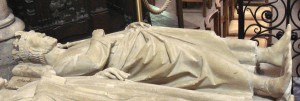
The tomb of Charles Martel who defeated the Moorish invasion at Poitiers in 732 AD.
While the basilica houses many of the tombs of the French kings – most of the remains were removed, thrown into pits and dissolved with lime during the French revolution; a terrible crime given the information their DNA could provide us with today. Nonetheless, you can still look upon the sculptured faces of some of France’s and Europe’s most influential kings.
Conciergerie
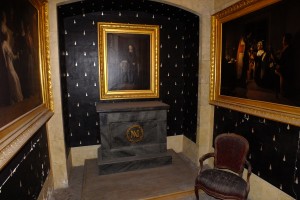
The room in which Queen Marie Antoinette was held while awaiting execution during the French Revolution.
Not far from Notre Dame de Paris is the Conciergerie. From the street this building looks insignificant but again has played a crucial role in France’s history. Located on the island in the middle of the Seine River (île de Cité), the Conciergerie was initially a defensive wall built to defend the island in the early 4th century as the eastern wall of a castle and played an important role in defending the city during the barbarian invasions. The site became the Parisian seat of the French kings through the Middle Ages from the 10th to the 14th centuries. Known as the Palais de la Cité, it was heavily fortified during the 13th century. The palace complex was served by about 2000 servants. It was later used as a prison, where prisoners would be interrogated (tortured). During the revolution, it continued to serve as a prison and held enemies of the revolution – the most famous of which was Marie Antoinette, the wife of Louis XVI. Later when the revolutionaries fell out amongst themselves it held such eminent personages as Robespierre – who himself had inspired the terror of mass executions by guillotine.
Place de la concorde
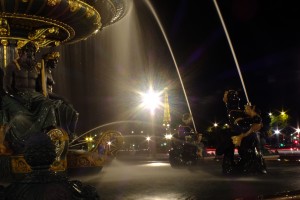
Place de la concorde is a magical location at night. It was the scene of horrors during the Reign of Terror in the French Revolution.
Concord Square is probably one of the most attractive squares in Paris. Centrally located to Paris’ main attractions it offers views towards the Arc de Triomphe, the Eiffel Tower, the Louvre and Hôtel des Invalides. The square was laid out during the reign of Louis XV and due to its royal associations became a key site for the revolution. Renamed Place de la Révolution, it was here that the famous guillotine was placed (at the site where the Egyptian obelisk now stands) and where the king and queen, Louis XVI and Marie Antoinette were executed, along with thousands of others who fell victim to the Reign of Terror. Following the revolution, the square was renamed Place de la Concorde. It features a stunning fountain, Fountain of River Commerce and Navigation installed in 1840 and an Eqyptian obelisk which was given by Egypt to France in 1831. It once stood in the Temple of Ramses at Thebes (now Luxor) and is about 3300 years old. The square is well worth visiting in the evening and is a pleasant walk from the attractions at Jardin des Tuileries, again a short walk from the Louvre.
Share this article on Facebook and check out Peter Campbell’s latest books on Amazon.com.
 If you want to learn or improve your French to get the most out of your visit, download Peter Campbell’s book Language Learning Secrets Revealed, available at Amazon.com.
If you want to learn or improve your French to get the most out of your visit, download Peter Campbell’s book Language Learning Secrets Revealed, available at Amazon.com.
Copyright © Peter Campbell 2015, www.intrepid-adventure.com



